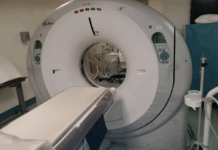The other day it became known that Hanoy authorities abandoned the idea of perestroika of the Longbien bridge. This news was joyfully greeted by the population of the capital of Vietnam and activists who are careful for preserving one of the historical attractions of the city.
Starting excursions in Vietnam, travelers are somehow visited by Hanoi. And, probably, each of them paid attention to the ancient two -kilometer bridge of the Longbien thrown across the Red River in the area of historical quarters of the Vietnamese capital.
This iron giant has already celebrated the venerable 110th anniversary and during this time has become a real symbol of Hanoi. He is known for tourist postcards, news reports, and just by reports about Vietnam. But besides this, its history is extremely interesting.
After all, it would seem in a completely non-European country to erect a grand engineering structure closely related to the names of many famous Europeans.
For example, the bridge was laid in September 1898 by the governor of Indochina by the field with a thought, which later became the president of France. And Gustav Aiffel designed this building, in whose honor his other brainchild of the Eiffel Tower in Paris is named.
Commissioned in early 1902, the bridge received the name Dumer and became the largest in Indochina and the second in length in the world. With the advent of this attraction, in the future Vietnam, excursions became very popular among travelers from around the world.
Initially, he thought, exclusively as a railway. However, a little later it was expanded and received an additional roadway for cars and bicycles, as well as a pedestrian zone, which allowed it to become the most important transport artery.
He finally became a symbol of Hanoi after the bombing of the US Air Force in the period from 1967 to 1971. During these years, a miraculously surviving bridge, a new name Longbien, was associated with an unbending will of the Vietnamese, who managed to survive the onslaught of one of the superpowers.
For many years, only bicycles have been traveling to Longbien and pedestrians go, and trains go along the railway tracks several times a day. Automobile message across the Red River was taken by modern overpasses built in several places at once. The designs of the old bridge have long been in need of restoration, and the government of the country decided how to conduct it for several years.
Several options were considered, among which there were proposals to demolish the old bridge and build a new one in its place, but preserving the general concept.
It was also proposed to carry out a serious restructuring of the existing bridge, replacing entire spans, thereby increasing its throughput and making more universal.
The easiest option for reconstruction was the restoration of bridge supports and replacing structures that have lost their supporting properties. Moreover, at the first stage, this proposal was considered reluctant, since it does not solve the issues of increasing the passenger flow.
And so, the hot disputes finally ended and the Ministry of Transport still decided to dwell on the third option for restoring the old Hanoi symbol.








